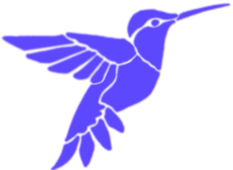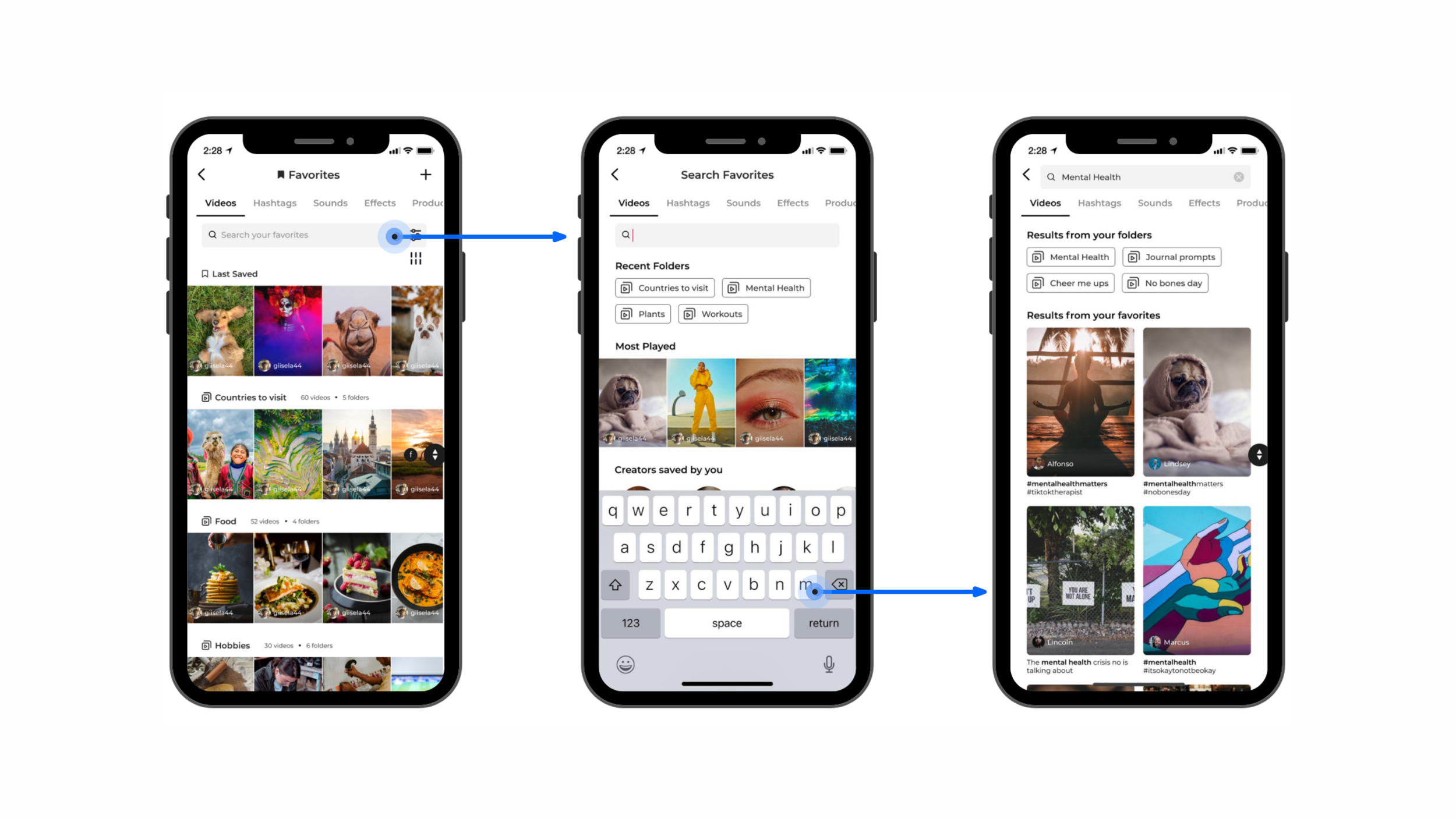Tiktok
Giving people organized and efficient content retrieval
Tiktok, the most popular and viral video-sharing social media platform, is focused on inspiring creativity and bringing joy to its users. However, people struggle to locate their watched content causing a joyless experience.
I redesigned tools to streamline the process of locating watched content to increase user engagement and acquisition while creating opportunities to increase revenue.
Duration
Sep ‘21 - Dec '21
Role
Product Designer
Responsibilities
Research, Strategy, Design
Problem
People can’t find previously watched content
It is time-consuming to scroll through an endless sea of content and difficult to find one specific video. In addition, there is poor discoverability of the current content retrieval system.
Tiktok is focused on inspiring creativity, bringing joy, and sharing content with others, but this problem of poor content retrieval is preventing them from engaging with tried and true content and sharing their findings with others creating a frustrating and joyless experience.
Tiktok has billions of videos uploaded. People need a content repository
People come across too many videos to remember how to find them and they have no control over their saved content making it hard to access.
Narrowing down videos they've watched by searching for keywords is not enough. People need a content retrieval system that they can control.
User Research
Why are people struggling to retrieve content?
I searched through user feedback on Tiktok videos to find anecdotal customer data. I interviewed current and past Tiktok users to identify their motivations and frustrations on saving and retrieving content.
Using affinity mapping, I analyzed user behavior and feedback to categorize a list of top user pain points. I extracted key insights from the interviews and narrowed down three areas of focus.
Pain Points
What are users struggling with the most?
What does the current user experience feel like?
People feel like they're trying to find Wan Shi Tong's Library
Wan Shi Tong’s Library is an enormous, ancient library preserving all the world’s knowledge, but it is extremely difficult to locate as it’s almost completely buried under the desert sand.
People need easy access to their own library. We want it to feel like a living, breathing library where you spend your desired time to explore, laugh, and create.
Product Strategy
Scaling the content retrieval system to reflect user needs
I focused on product strategy to drive Ad-based revenue and convey the long-term impact of creating an efficient content retrieval system. As a user’s saved content library scales, the Tiktok content retrieval system needs to scale in comparison.
Design Goals
Streamline the process of locating previously watched content
Tiktok makes content more accessible to more people, but what if we could create opportunities to create an organized and efficient content retrieval system to inspire more engagement, sharing, and content creation.
Supporting Design Goals
Visual Design Goals
Ideation
How might we reduce the steps it takes to save and retrieve content?
With the current Tiktok experience, it is overwhelming to locate or gradually organize thousands of videos. I focused on ways to increase discoverability, organization, and flexibility to reduce the steps it takes to save and retrieve content.
Option B is a fun concept to narrow down content by creators but is out of design goals scope. Option D does not provide enough autonomy as users lack control of how they would like their content organized. Tiktok must make users feel like they have a tailored, personalized account for engagement. This option takes personalization away from them.
Option C provides users the autonomy to organize content into folders giving them a reason to re-engage with easy-to-find content.
Option E accommodates task-negative and task-positive users providing flexibility to navigate and quickly search through saved content. Option F lets people complete impactful actions easier and quicker.
Validation
Measuring the intuitiveness of the new content retrieval system
I completed 5 usability tests to evaluate and identify how users are struggling with the new design. I categorized my research questions and goals under three main areas:
Areas of improvement
Celebrating the wins
Final Design
An organized and enjoyable library to retrieve content
Let’s stray away from the old archival system leaving users frustrated; Give users the autonomy to create their own libraries full of joy, creativity, and inspiration. Through this new method, we can create a new way to organize, share and collaborate — a new way to favorite.
By doing so, we are:
Drawing people back in to re-engage and increasing retention: People know they can easily organize and find their old content and are motivated to do so.
Increasing user acquisition: Allow people to share multiple videos at once or share a playlist inviting new users.
Providing value to advertisers and creators to monetize on Tiktok: With more people on the platform and engaging with content, Tiktok can provide value to advertisers increasing their annual revenue.
User saves video to playlist
User retrieves content & shares with friends
User searches for saved content
Vision
Leverage playlists to create collaborative and engaging content libraries
By mostly focusing on video content creation tools and feed relevancy, Tiktok has neglected the user’s end-to-end experience with watched content.
If we learn that people increasingly share videos and playlists, we can pave the way to create collaborative playlists. This makes it easier to engage, share, and for content to go viral amongst networks. In the future, playlists could influence a user’s algorithm increasing a user's feed relevancy leading to user engagement.
By allowing people to have more control over their watched content, they can make their own libraries that make them learn, laugh, and feel inspired.
Impact
Success Metrics
Are Tiktok users finding value in organizing and retrieving their content? Though I have not launched this redesigned experience, my success metrics are to:
Key Learnings
Complex and grand solutions doesn’t mean you're a great designer
While solving the user problem, I was worried I wasn't creating the most innovative or complex solutions. At first, I only had three ideas. I believed I needed a plethora of show-stopping solutions; if I didn't, I wasn't the creative designer I thought I was. However, a good designer solves the problem effectively by focusing on design goals supported by user and business impact than creating unfeasible solutions out of scope.












